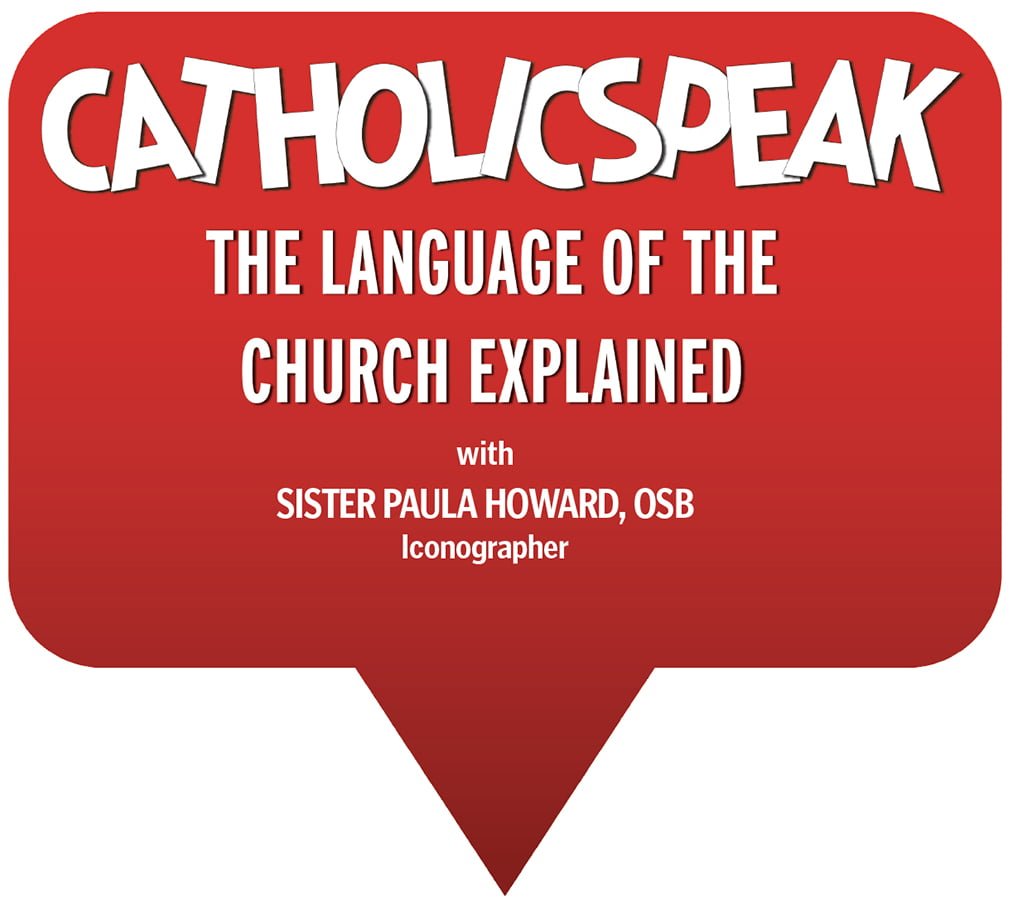
by Maria Blong
Special to The Leaven
Icons are often perceived as an ancient religious art form that assisted the laypeople of the early church in their contemplation of the divine. However, icons still have much to offer the modern-day Catholic.
The Leaven spoke with iconographer Sister Paula Howard, a Benedictine at Mount St. Scholastica in Atchison, for a deeper dive into the origin of icons and their rich symbolism.
Q: We now commonly use the term icon to refer to a symbol or a graphic on our iPhones and computers. But it actually has a much older meaning. What is an icon?
A: “An icon is a representation of a Gospel story or holy person which was used in the early church to teach the illiterate masses and to pray. They were highly revered,” said Sister Paula, “as was the Gospel.”
Q: When and how did icons originate?
A: Iconography flourished mainly throughout the Eastern Christian tradition during the 1000 years of the Byzantine Empire. The oldest icon, “Christ Pantocrator,” can actually be traced back to sixth-century Egypt.
St. Luke the Evangelist is often credited with being the first iconographer of the Catholic Church, as well as being iconographers’ patron saint. Tradition holds that he created one of the first images of the Blessed Virgin, which he shared with her, and of which she approved.
He also is believed to have traveled widely in countries like Greece, Turkey and Syria, which could help to explain the popularity of icons in Orthodox Christianity.
Q: So, the art form actually originated with Christianity?
A: It is inconclusive. Some sources say icons originated with Greek and Roman pagan culture and were eventually adapted by Christianity. Others believe it to be a solely Christian art form. Despite conflicting sources, it can be reasonably concluded that iconography was made popular through Christianity. The longevity of its presence in Christian culture can be seen on the walls of ancient Orthodox churches.
Q: What is the subject of most icons?
A: Icons depict a wide variety of subjects. Most of these include images of Jesus Christ and his Blessed Mother, saints, angels and important biblical moments or parables (e.g., the Nativity).
Q: Western art is full of the images from the Bible. How are icons different from other art representing Christ and the Virgin Mary?
A: Compared to Western art where there is more artistic freedom and the style is often more realistic, iconography presents more than a beautiful re-creation. Its design is concerned more with teaching through symbolic representation, a characteristic that makes iconography’s style distinct.
Q: Why do the people not look more realistic? And why does the composition seem so fixed and unmoving?
A: “Realism was not important to the iconographer,” said Sister Paula. “They followed rigid rules that would make interpretation correct.”
The strict adherence to rules is represented in the composition of the subjects’ faces and explains their stoic appearance. They often display exaggerated facial features to correlate with some pious symbolism. For example, the subjects of icons usually feature small mouths as a sign of a contemplative nature and their observance of silence and prayer.
Q: What are they painted with and what are they painted on?
A: “Early icons were written with natural pigments from plants mixed with egg yolks,” said Sister Paula. “I image they were written on parchment or canvas. Modern iconographers use a special kind of tempura and write birch wood or another wood that has no grain lines. This surface is treated with gesso and sanded until it is smooth as glass.”
Q: Why is an icon actually “written” instead of painted? What does that mean?
A: “The meaning of ‘icon’ in Greek is ‘image’ and of ‘grapher’ is ‘writer,’” said Sister Paula. “Together they mean ‘writer of images.’ The purpose of the icon was to teach, as was the Bible.”
Icons were also considered more of a form of prayer than art. Each stroke is supposed to represent a prayer that was “written” during the creation process.
Q: Icons are more commonly associated with the Orthodox Church. What can Roman Catholics gain from learning more about icons?
A: Learning about icons gives Roman Catholics a new method of prayer. Instead of closing their eyes, they can settle them upon holy images that draw their mind upward toward heaven. The symbolism written in each one gives the observer something to contemplate about themselves and the virtues they desire.




